This resource was developed in 2004 as part of “Biafra, Nigeria, the West and the World” by David Trask.
This section addresses the basic events of the secessionist period in Nigeria. The primary sources presented here are almost exclusively items that were published or stated during the 1966-1970 period. This evidence includes speeches of leaders, government pronouncements, newspaper accounts and international reactions. This section also provides guidance in terms of maps and concludes with different theories of why these events occurred. As you read through these items, keep notes not just on what is going on but also write down questions and theories that have formed in your own mind as well as issues or terms you wish could be more fully defined. In many cases, your classmates will have this information because it appeared in their readings.
Orientation to Biafra and Nigeria
All historians need to orient themselves to the setting in which the events they are studying are embedded.
Because the events are essentially unfamiliar to people today, you should first review a timeline of the events of the civil war itself from first coup to final defeat of the secessionists.
Then check some maps to become familiar with the location of the events including:
Contemporary Map of Nigeria
This map shows the location of major cities but does not show any political (state) boundaries. The capital of Biafra was Enugu in the southeast while the northern capital was Kaduna.
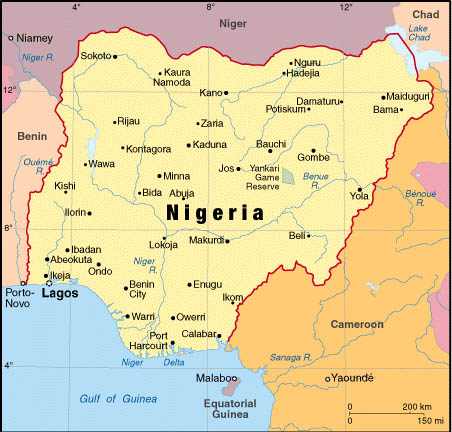
A map of Nigeria in 2004.
Ethnic Diversity
Nigeria has about 250-300 ethnic groups as measured by self-identification or the presence of different languages. This map shows the general location of some of the major centers of the more numerous groups. Obviously the Igbo had spread out of the southeast into the other regions of Nigeria but their “home region” was in the southeast. What conclusions can you draw from this map? Is there a clear cut Igbo-only region in Nigeria? Were the Hausa spread extensively and exclusively across northern Nigeria?
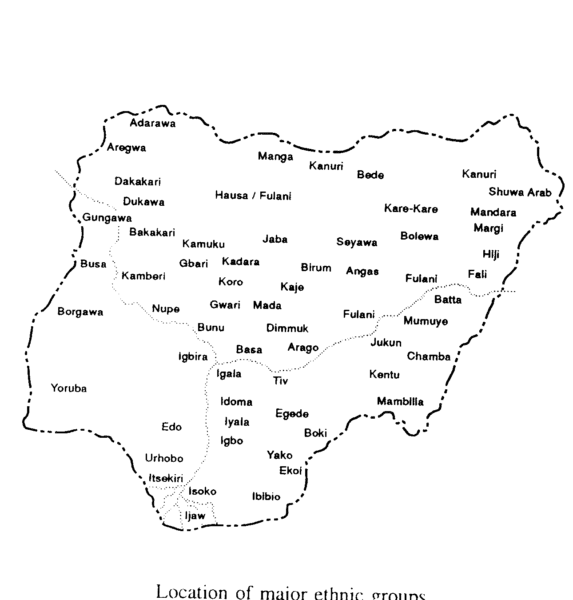
A map of Nigerian ethnic groups as of 2004.
Four Region Map
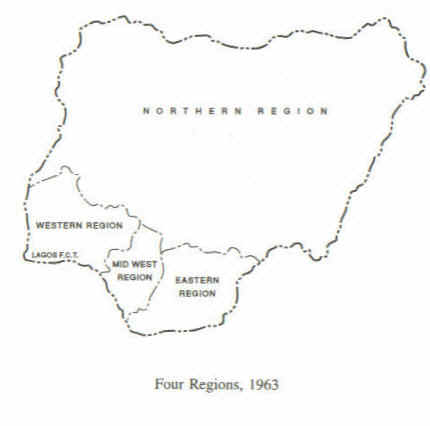
A map of the 4 regions of Nigeria in 1963.
1996 Political Boundaries
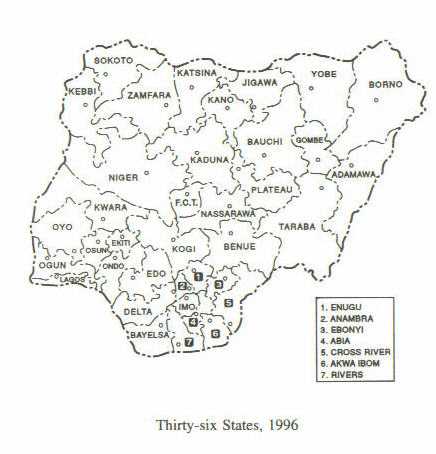
A map of regions of Nigeria in 1966.
Economic issues often play a role in these events. The data on petroleum shows that the Nigerian government gains a lot of revenue from the sale of oil, even back into the 1950s. The Nigerian central government gains (and gained) a lot of its revenue from oil companies which pay a charge for the petroleum they ship out of Nigeria. This table shows the percentage of total government revenue which comes from these charges on oil.
| Year | Percentage |
| 1958-59 | .08 |
| 1962-63 | 7.31 |
| 1966-67 | 18.26 |
| 1970-71 | 25.99 |
| 1974-75 | 80.81 |
| 1978-79 | 66.30 |
| 1982-83 | 67.00 |
| 1986-87 | 75.80 |
| 1989-90* | 97.24 |
*Last year of information on the source.
[Adapted from data in Eghosa E. Osaghae, Crippled Giant Nigeria Since Independence (Bloomington: Indiana University Press, 1998), p. 20.]
Especially critical for Nigeria is an understanding of the ethnic make-up of the country. In addition to the map on ethnic diversity look at data on the ethnolinguistic diversity of Nigeria today.
Countries issue money and new countries, even in the midst of civil war, attempt to issue currency. Notice the images on Biafran money; what do these images say about Biafra?
You can also look at the words for the national anthem of Biafra, written by Nnamdi Azikiwe.
Land of the Rising Sun
Land of the rising sun, we love and cherish,
Beloved homeland of our brave heroes;
We must defend our lives or we shall perish,
We shall protect our hearths from all our foes;
But if the price is death for all we hold dear,
Then let us die without a shred of fear.
Hail to Biafra, consecrated nation,
Oh fatherland, this be our solemn pledge:
Defending thee shall be a dedication.
Spilling our blood we’ll count a privilege;
The waving standard which emboldens the free
Shall always be our flag of liberty.
We shall emerge triumphant from this ordeal,
And through the crucible unnscathed we’ll pass;
When we are poised the wounds of battle to heal,
We shall remember those who died in mass;
Then shall our trumpets peal the glorious song
Of victory we scored o’er might and wrong.
Oh God, protect us from the hidden pitfall,
Gu/de all our movements lest we go astray;
Give us the strength to heed the humanist call:
‘To give and not to count the cost’, each day;
Bless those who rule to serve with resoluteness,
To make this clime a land of righteousness.
A question and a reminder
Is the past really past? Does the Biafra conflict continue to echo in today’s political debates in Nigeria? The answer is “yes.” Read this grouping of three letters to the editor of USAfrica Online which ask if Nigerians need to continue to apologize to the Igbo for the treatment they received during secession.
What Were the Issues in This Civil War?
The first information people usually receive about an international flare-up comes from the participants themselves who seek to frame the issues in the way they see them while undercutting the claims of their opponents. The material here introduces Biafra in precisely this way. The following statements were issued in the midst of the conflict and represent different points of view from the actors themselves. It is important to remember that these statements were also crafted to win support or sympathy from outside the country.
Biafran Goals
The best statement of Biafran goals comes from the nation’s own Declaration of Independence.
Nigerian Goals
When the secession movement ended, the leader of the victorious Nigerian government stated his views of the issues in a radio speech in January, 1970.
Global Concerns
The global interest in Biafra was related to the pictures of human misery within Biafra. Secession was supported by some people because of ideals of national self determination and because of human rights (in the sense that people shouldn’t be treated this way). On the other hand there were extensive fears that if any people who want it can secede into their own independent state, then won’t we see a collapse of world order followed by the rise of chaos accompanying the scramble to create numerous independent, micro-states?
Causation
Chinua Achebe served as a voice for Biafra outside of Nigeria. This paper, first presented in 1968 in Uganda, addresses the larger issues which he felt were behind the civil war in Nigeria.
Compare the principles and stories told by all of the different documents you have looked at, either individually or as a group, for Biafra. What things can you say you feel certain did occur because everyone seems to agree in their statements? What things are mentioned by only some or even one of the participants? Are their any issues that seem left out? How do these findings match up statements about the causes of the secession movement?
Related Resources
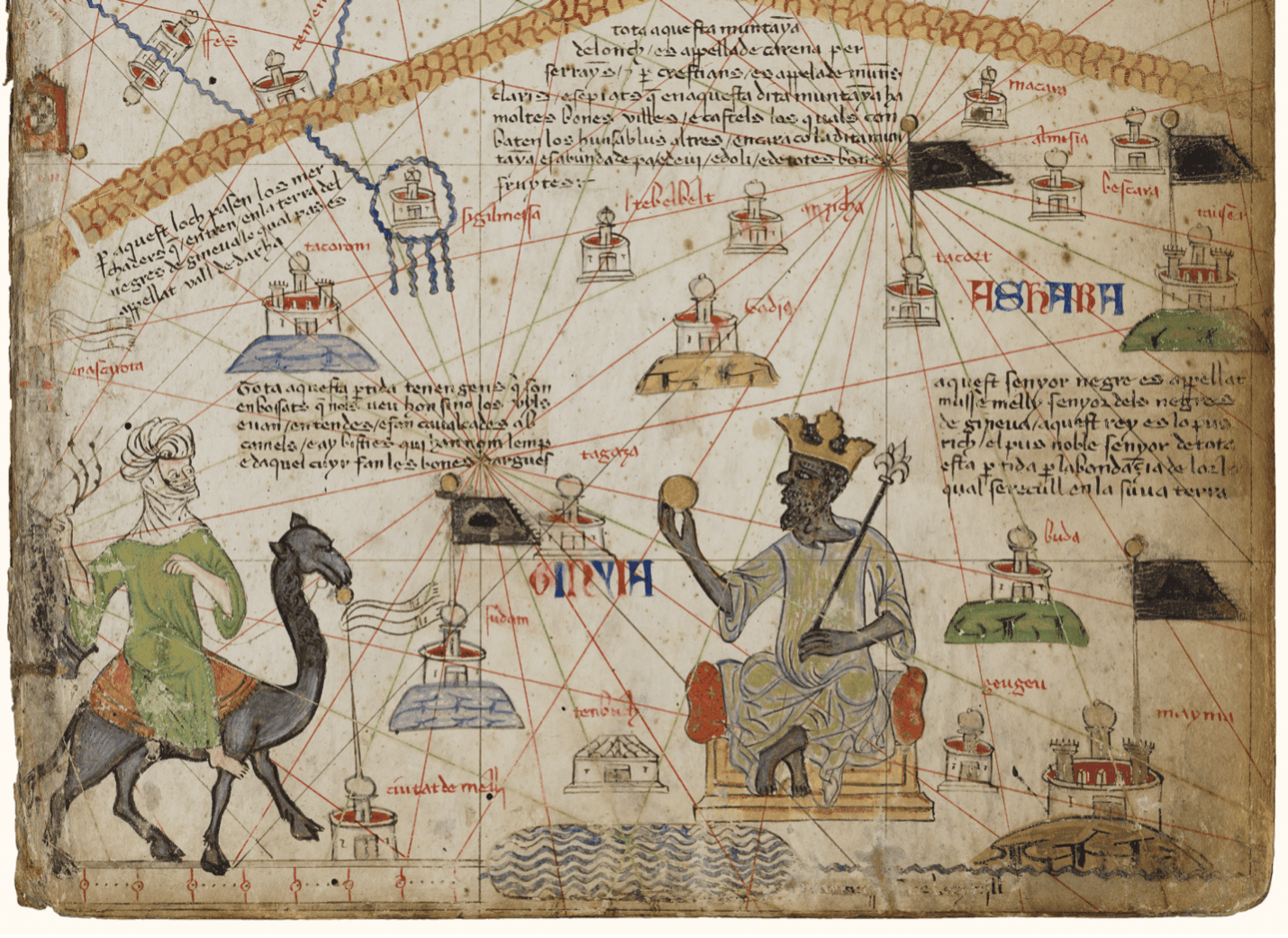
September 7, 2024
Travel and Trade in Later Medieval Africa
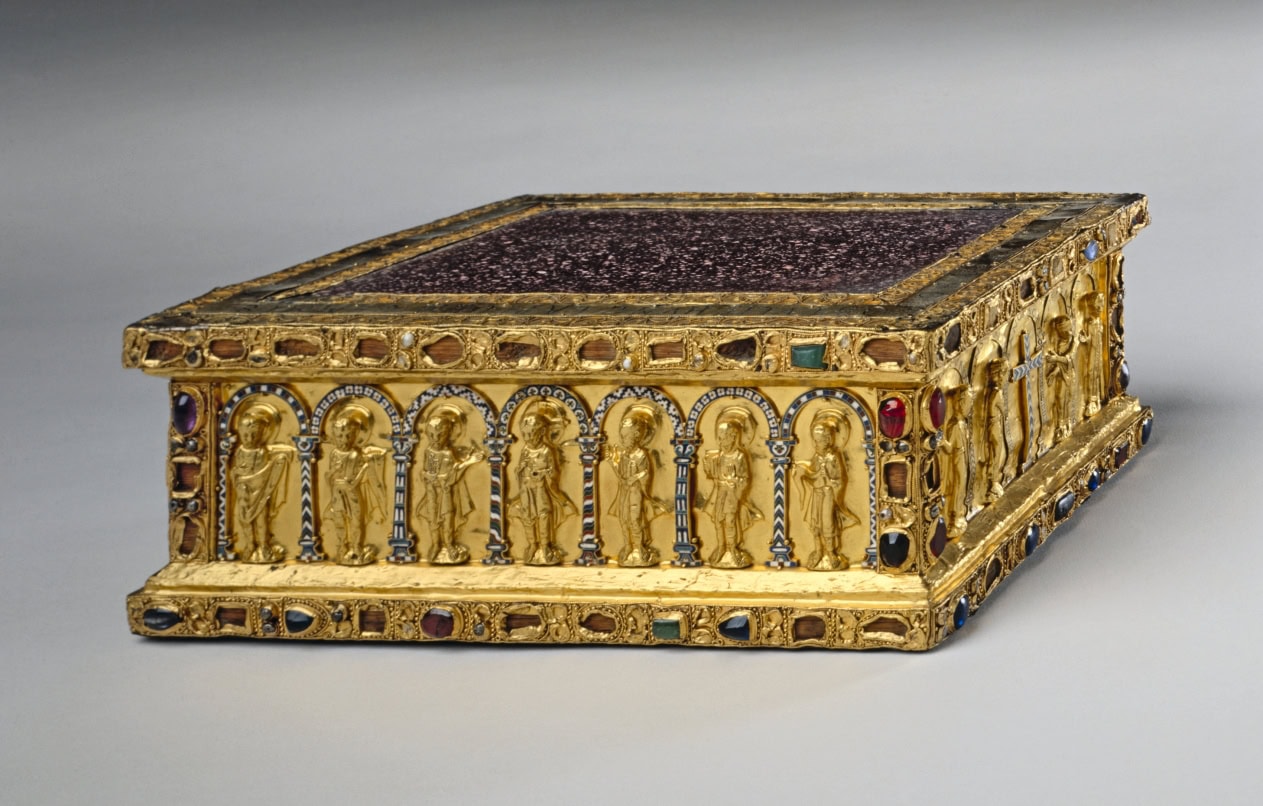
September 6, 2024
Sacred Cloth: Silk in Medieval Western Europe
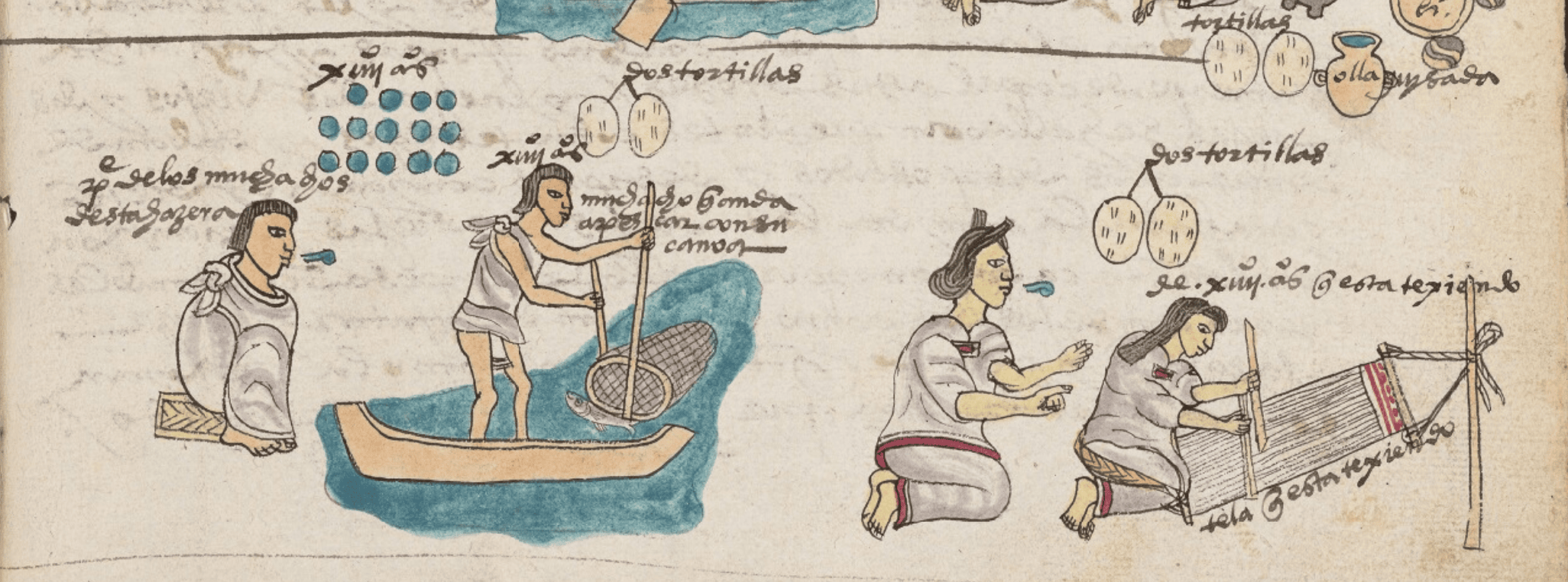
September 5, 2024